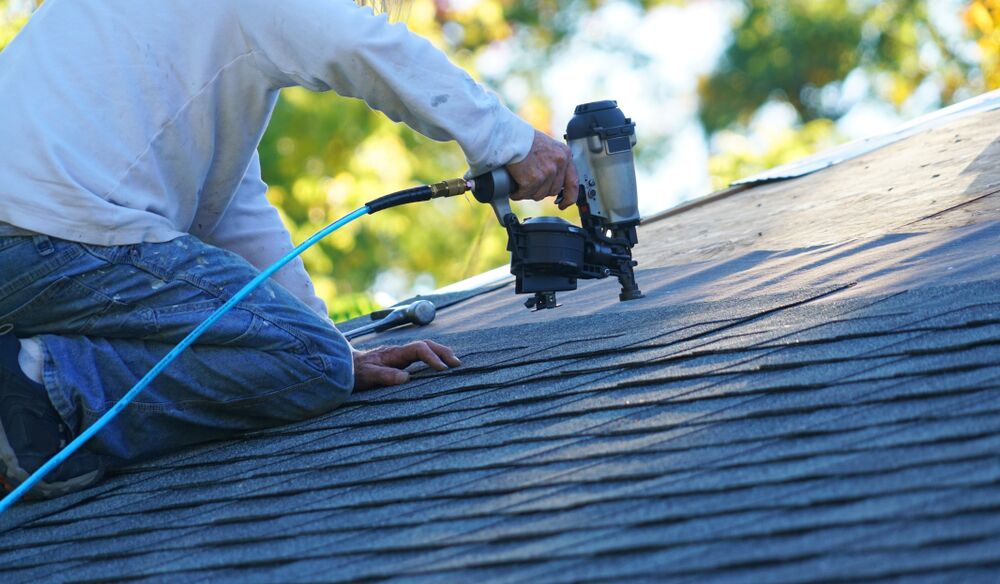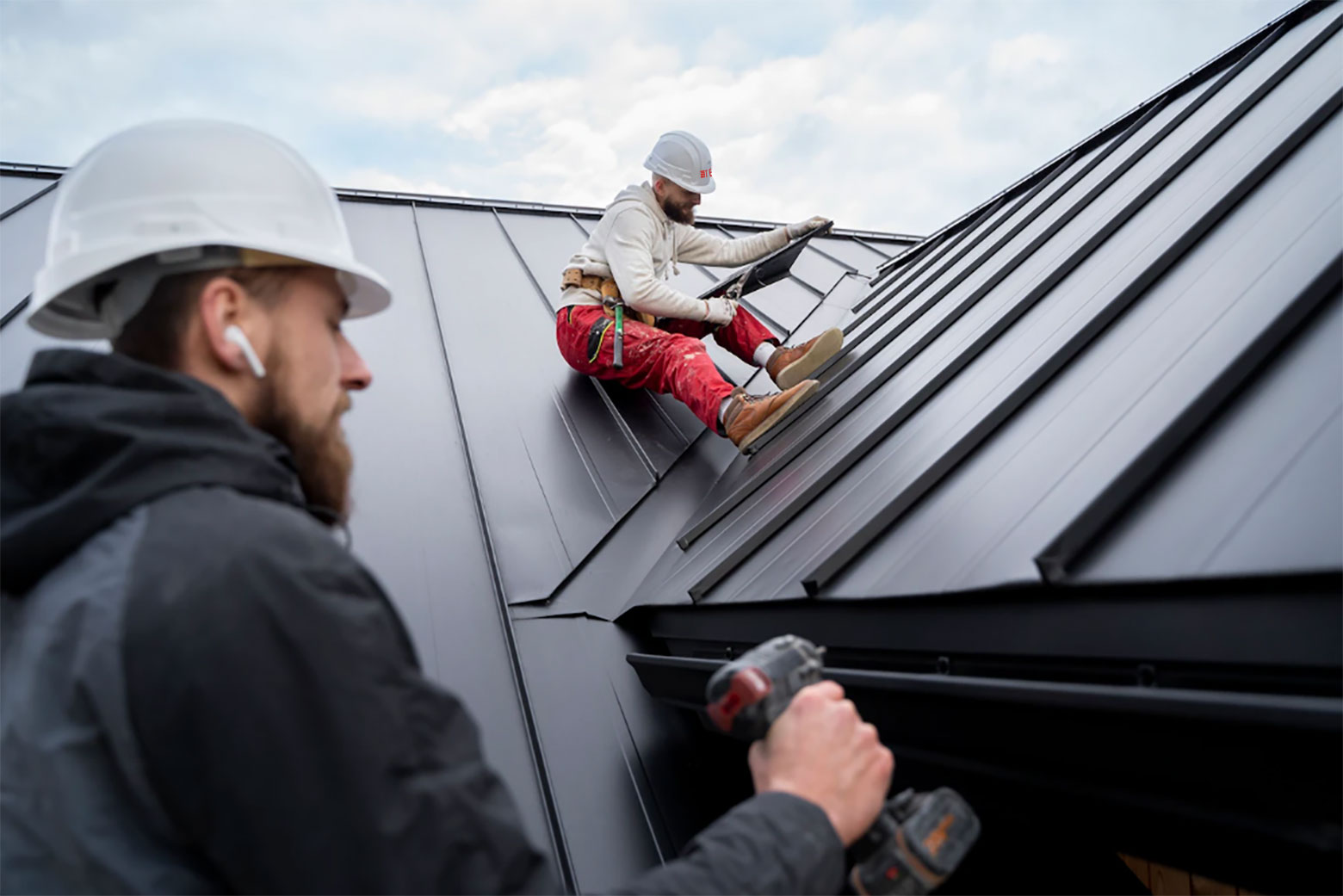Oahu Roofing: Comprehensive Roofing Services in the Oahu Location
Recognizing the Various Types of Roofs: A Comprehensive Guide for Homeowners
With a selection of choices-- ranging from the traditional gable to the modern level-- each kind presents distinct benefits and challenges that must align with the house owner's specific needs and environmental considerations. As we check out the complexities of different roofing types, it ends up being evident that one size does not fit all; the best choice may surprise you.
Saddleback Roof
Saddleback roofs, identified by their triangular form, are among one of the most prominent roof styles due to their simplicity and effectiveness in dropping water and snow. This layout includes 2 sloping sides that fulfill at a ridge, enabling for effective water drainage and lessening the risk of water build-up. The steep pitch typically related to saddleback roofs enhances their capability to handle hefty rainfall, making them appropriate for various climates.
In addition to their functional benefits, gable roof coverings supply aesthetic flexibility. They can be adapted to various architectural styles, from traditional to modern-day homes. The layout can additionally fit extra functions such as dormer windows, which boost natural light and air flow in the attic room space.
Furthermore, saddleback roofs give sufficient room for insulation, contributing to power efficiency. Homeowners can choose from a selection of roofing materials, consisting of asphalt shingles, steel, and tiles, additionally enhancing modification alternatives.
In spite of their advantages, saddleback roofs may need additional assistance in areas susceptible to high winds or heavy snowfall. On the whole, the gable roofing continues to be a popular option due to its mix of functionality, resilience, and visual charm.
Apartment Roofs
Flat roofs are frequently identified for their minimal design and useful applications, particularly in industrial and business setups (oahu roofing). These roofings include a virtually straight or straight surface, which enables easy building and construction and versatile area use. While they might do not have the visual charm of pitched roofings, level roofings supply countless benefits, especially in city settings where optimizing space is crucial
One of the key benefits of level roofing systems is their access. Home owners can use the roofing room for numerous functions, such as rooftop yards, terraces, or solar panel setups. In addition, level roofing systems are normally more economical to preserve and mount contrasted to their sloped counterparts, as they require less materials and labor.
Nevertheless, flat roof coverings do present specific challenges. Correct water drainage is important to stop water pooling, which can cause leakages and structural damages. Thus, picking high-grade waterproofing materials and regular evaluations are important for ensuring durability. Common materials made use of for flat roofs consist of built-up roof covering (BUR), changed asphalt, and single-ply membranes, each offering distinctive benefits. Generally, level roof coverings function as a adaptable and practical choice for several property owners and companies alike.
Hip Roof Coverings
Hip roofings are defined by their sloped sides that converge on top, forming a ridge. This design stands out from saddleback roofs, as all four sides of a hip roofing slope downwards toward the wall surfaces, supplying a much more stable structure. The angle of the slopes can vary, allowing for convenience in building looks and performance.
Among the primary advantages of hip roofs is their capacity to hold up against heavy winds and negative weather. The sloped surfaces enable much better water drainage, reducing the danger of leakages and water damage. Furthermore, hip roofing systems provide raised attic room, which can be made use of for storage space or also transformed into livable locations.
Nevertheless, creating a hip roof can be more expensive and intricate than simpler roofing system types, such as gable roof coverings. The extra material and labor entailed in developing the slopes and making sure appropriate structural integrity can result in greater expenditures. In spite of these downsides, numerous property owners prefer hip roof coverings for their longevity, aesthetic allure, and capacity for energy effectiveness.
Mansard Roofs
Mansard roofing systems, frequently acknowledged by their unique four-sided layout, feature 2 inclines on each side, with the reduced slope being steeper than the upper. This building design, originating from France in the 17th century, is not just cosmetically enticing yet functional, as it takes full advantage of the usable space in the upper floorings of a structure. The steep lower slope permits more headroom, making it an optimal option for attics or loft spaces, which can be exchanged living spaces.
Mansard roofs are identified by their flexibility, accommodating various architectural styles, from conventional to modern. They can be built with various materials, including asphalt shingles, slate, or steel, supplying home owners with a range of options to match their budgets and choices. Additionally, the style permits the integration of dormer home windows, enhancing all-natural light and air flow in the upper levels.
Nevertheless, Visit Website it is essential to consider the potential downsides. Mansard roofs may need even more maintenance due to the intricacy of their style, and their high inclines can be testing for snow and rainfall drainage. In general, mansard roofings integrate elegance with usefulness, making them a preferred option amongst home owners looking for unique architectural features.
Lost Roofing Systems
As homeowners significantly look for simpleness and capability in their building layouts, dropped roofs have emerged as a popular option. Identified by a solitary sloping plane, a shed roof presents a minimal visual that matches numerous home styles, from modern to rustic.
Among the main benefits of a shed roofing is its straightforward building, which typically equates to lower labor and material prices. This design enables reliable water drain, decreasing the danger of leaks and water damage. In addition, the upright slope provides enough space for skylights, enhancing natural light within the inside.
Dropped roofings likewise supply versatility in regards to use. They can be effectively integrated into additions, garages, or outdoor frameworks like structures and sheds. Furthermore, this roofing system design can accommodate various roof products, consisting of metal, asphalt shingles, or perhaps eco-friendly roofs, straightening with eco-friendly initiatives.
However, it is important to think about local environment conditions, as hefty snow loads might necessitate changes to the roofing system's angle or framework. Overall, lost roofs provide a functional and visually pleasing option for house owners looking to take full advantage of performance without compromising design.
Conclusion


Gable roof coverings, identified by their triangular shape, are among the most popular roofing styles due to their simplicity and effectiveness in dropping water and snow. oahu roofing. The steep pitch generally linked with gable roofs improves their ability to deal with heavy precipitation, making them appropriate for different climates
While they may lack the aesthetic allure of pitched roofing systems, level roofings use many advantages, specifically in urban settings where maximizing space is essential.
